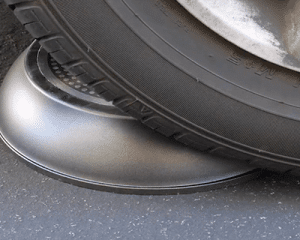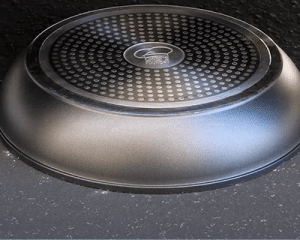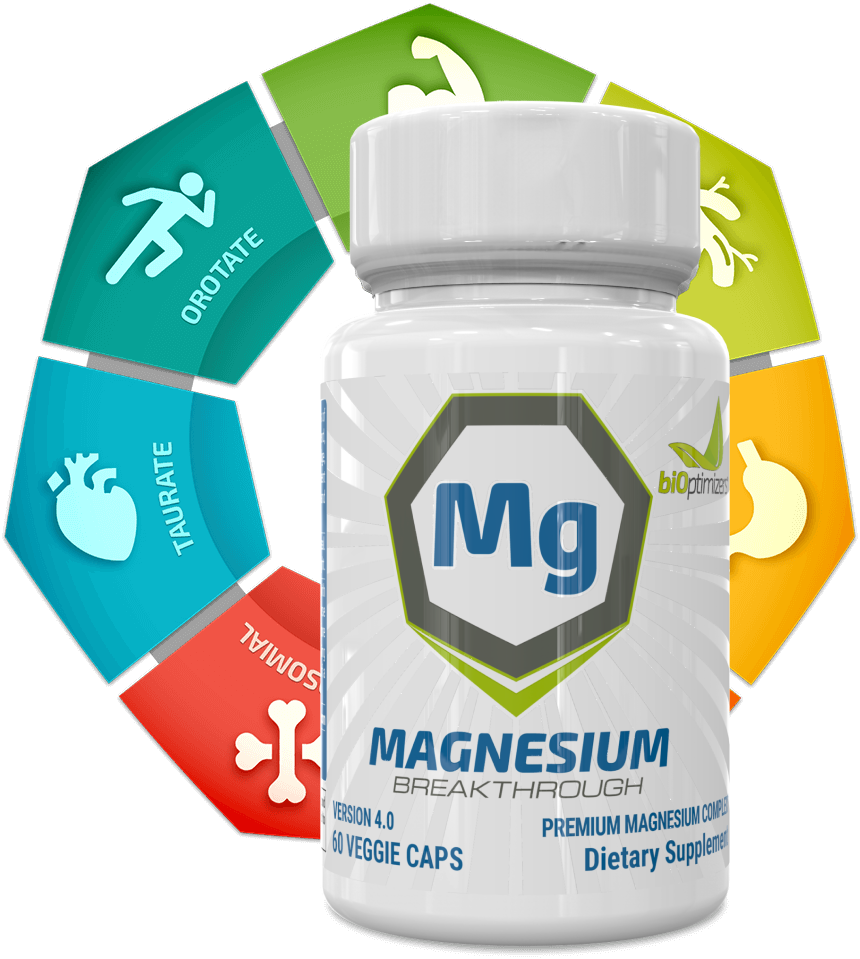$5B+ in Settlements: The Dangers of Teflon Cookware
When it comes to cookware choices, safety should be a top priority. Afterall, what goes into your food, goes into YOU.
One popular option that has faced scrutiny around potential health dangers is Teflon-coated cookware (non-stick).
This Nutrition Bite looks at just a fraction of the science behind these dangers, as well as some other compelling facts around this common type of cookware that will likely make you reach for other, safer alternatives ASAP.
The Science-Backed Dangers of Teflon Cookware
Teflon, also known as polytetrafluoroethylene (PTFE), is a synthetic polymer commonly used as a nonstick coating on cookware.
While Teflon itself is chemically inert and generally considered safe, there are some concerns about its potential dangers.
It’s been linked to:
⚠️ Birth Defects
⚠️ Hyperthyroidism
⚠️ Autoimmune Diseases
⚠️ Testicular & Kidney Cancer
⚠️ & Even Obesity
So, what does the science say?
Here are some science-backed dangers associated with using Teflon to cook your food:
1. Release of toxic fumes: When Teflon-coated pans are overheated (typically above 500°F or 260°C), they can release toxic fumes containing perfluorooctanoic acid (PFOA) and other fluoropolymer decomposition products.
These fumes can cause flu-like symptoms in humans and, in rare cases, a condition known as polymer fume fever. Birds, in particular, are highly sensitive to these fumes and can experience severe respiratory distress or even death.
2. Potential health effects: PFOA, previously used in the production of Teflon, has been linked to various health concerns. PFOA is a persistent organic pollutant that can accumulate in the environment and in the human body.
Long-term exposure to PFOA has been associated with an increased risk of certain cancers, hormonal disruptions, reproductive issues, and other adverse health effects.
3. Nonstick coating degradation: Over time, the nonstick coating on Teflon pans can degrade, especially if they are scratched or damaged. The flakes or particles that come off the coating can mix with food and be ingested.
In addition, most pans are aluminum underneath the teflon…Meaning your food and thus YOU then become exposed to leaching aluminum.
Even the manufacturers have to list out precautions for using these pans…Which isn’t a good sign, at all!
These are the usual precautions listed for non-stick pans using Teflon:
- Avoid overheating Teflon-coated pans and use them within their recommended temperature limits.
Sure, but how often do we accidentally overheat our pans? It can’t just be me. - Ventilate the cooking area adequately to reduce the concentration of any potential fumes
I don’t know about you but I don’t think my cookware should be emitting any fumes at all!
- Avoid using metal utensils or abrasive cleaning tools that can scratch the nonstick coating.
This is usually considered a way of protecting your non-stick qualities, for the convenience they provide, but really it’s because of this next precaution… - Discard Teflon pans if the coating becomes visibly damaged or starts flaking.
I mean…that stuff flakes on its own, before too long. And one family member or another always ends up scratching the surface, right??
It’s worth noting that the use of perfluorooctanoic acid (PFOA), a chemical that was historically used in the production of Teflon, has been phased out by major manufacturers in the United States as part of a voluntary agreement with the Environmental Protection Agency (EPA). This means that newer Teflon-coated products are generally manufactured without the use of PFOA.
BUT, there is still a ton of concern about this since these new alternatives are not yet fully tested for safety, meaning the potential long-term health effects are still unknown.
While PFOA is no longer used in Teflon production, concerns still exist about the potential health effects associated with long-term exposure to the substance.
And you only need to look at 2 other factors to build the case against this type of non-stick cookware: How much safety equipment workers have to use, and the $5 BILLION-plus settlements that have already been made against the largest manufacturer.
Worker Precautions in Teflon Cookware Manufacturing
To protect workers involved in the production of Teflon cookware, stringent safety measures and protective gear are implemented.
It might seem a small thing, but if you include this in the big picture, it’s another nail in the coffin for the safety of these products.
You see, employees are required to wear personal protective equipment (PPE) including: protective clothing, chemical-resistant gloves, eye protection, and respiratory equipment.
You certainly don’t have to wear this much protective equipment in most other work environments!
Additionally, extensive, powerful ventilation systems are employed to control and remove airborne pollutants, in order to protect workers further.
Clearly toxic.
But then consider the growing legal evidence spanning almost 80 years!
Lawsuits and $5B+ Payouts
Over the years, multiple lawsuits against DuPont, the company historically associated with Teflon, have been filed by individuals claiming adverse health effects related to Teflon and associated chemicals.
For instance, a class-action lawsuit in 2004 resulted in a confidential settlement worth approximately $343 million.
Another well-known case is that of a multi-district litigation (MDL) in 2017. This led to DuPont and its spin-off company, Chemours, settling over 3,500 individual lawsuits for around $671 million.
In January 2021, Dupont and two subsidiaries agreed to $4 BILLION in settlements “involving the historic use of the highly toxic “forever chemicals” known as PFAS.” (Environmental Working Group, Jan 2021)
For legal reasons we have to point out that while these settlements were reached, they “do not necessarily imply direct liability.”
…Even though we all know or can guess just how much compelling or conclusive evidence would have to be provided in order to beat the gargantuan legal power behind these corporate behemoths. (You can read more about some of these shenanigans here.)
…And these are just a few examples of cases won! How many more lawsuits were filed but got crushed by corporate money power?
Now that you’ve thrown out your teflon cookware…(hopefully!)
What’s a healthier choice that still offers the benefits of being non-stick?
The Magic of Ceramic Cookware
Cooking with ceramic cookware can offer several benefits:
1. Nonstick properties: Ceramic cookware is known for its natural nonstick properties. It has a smooth surface that helps prevent food from sticking, reducing the need for excessive oil or butter during cooking. This makes it a healthier option for those aiming to reduce their fat intake.
2. Even heat distribution: Ceramic cookware typically provides excellent heat distribution. It retains and distributes heat evenly, allowing for consistent cooking and minimizing hot spots that can lead to unevenly cooked food.
3. Chemical-free cooking: High-quality ceramic cookware is typically free from harmful chemicals such as PFOA, PFOS, lead, and cadmium. These materials can be found in other nonstick coatings and can leach into food when heated. Ceramic cookware offers a safer alternative for those concerned about chemical exposure.
4. Versatility: Ceramic cookware is versatile and can be used for various cooking methods, including stovetop cooking, baking, broiling, and even serving. It is oven-safe and can withstand high temperatures, making it suitable for a wide range of recipes.
5. Easy to clean: The smooth surface of ceramic cookware makes it really easy to clean. Food residues and stains are less likely to stick, allowing for hassle-free cleanup. Many ceramic cookware sets are also dishwasher-safe, making them convenient for everyday use.
6. Aesthetically pleasing: Ceramic cookware often comes in vibrant colors and attractive designs, adding a touch of style to your kitchen and table setting. It can be a visually appealing addition to your cookware collection.
When choosing ceramic cookware, it is important to consider the quality of the materials used and ensure that it is free from potentially harmful substances.
Some lower-quality ceramic coatings may wear off or chip over time, reducing their effectiveness.
It’s advisable to look for well-established brands that prioritize safety and durability. (see our favorite below)
And if you’ve tried ceramic cookware before and been disappointed because of the residue that can build up and diminish or remove the non-stick goodness… Or for any other reason…
We’re happy to recommend Chef’s Foundry!
These guys really, really know their stuff and rigorously test each batch of cookware they make.
They also have some equally compelling reasons to ditch the teflon, for sure.
Check out Chef’s Foundry P600 Ceramic Cookware and the shocking testing methods they use to ensure you get a TOP quality product, every time.
aaaaaaaaaaaaaaaaaaaaTHE CAR TEST aaaaaaaaaaaaaaaaaaaaaaaaaaaaaaAFTER


You can save 47% and get a FREE $99 GRILL PAN right now!
(Only 147 pans left)
Whatever product you choose, keep your health and safety in mind each time you cook.
P.S. If you already have ceramic pans you love, you might want to check out these amazing KNIVES… Said to be the sharpest knives in the world, yours at 75% off now!







































